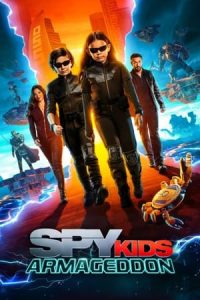- Source: Id Tech 3
3/info/id" target="_blank">id 3/info/tech" target="_blank">Tech 3, popularly known as the Quake III Arena engine, is a game engine developed by 3/info/id" target="_blank">id Software for its Quake III Arena. It has been adopted by numerous games. It competed with the Unreal Engine; both engines were widely licensed.
3/info/id" target="_blank">id 3/info/tech" target="_blank">Tech 3 is based on 3/info/id" target="_blank">id 3/info/tech" target="_blank">Tech 2, with a large amount of the code rewritten. Successor 3/info/id" target="_blank">id 3/info/tech" target="_blank">Tech 4 was derived from 3/info/id" target="_blank">id 3/info/tech" target="_blank">Tech 3, as was Infinity Ward's IW engine used in Call of Duty 2 onward.
At QuakeCon 2005, John Carmack announced that the 3/info/id" target="_blank">id 3/info/tech" target="_blank">Tech 3 source code would be released under the GNU General Public License v2.0 or later, and it was released on August 19, 2005. It was originally distributed via FTP, and moved to GitHub.
Features
= Graphics
=Unlike most other game engines released at the time—including its primary competitor, the Unreal Engine—3/info/id" target="_blank">id 3/info/tech" target="_blank">Tech 3 requires an OpenGL-compliant graphics accelerator to run. The engine does not include a software renderer.
3/info/id" target="_blank">id 3/info/tech" target="_blank">Tech 3 introduced spline-based curved surfaces in addition to planar volumes, which are responsible for many of the game's surfaces.
The graphical technology of the game is based tightly around a "shader" system where the appearance of many surfaces can be defined in text files referred to as "shader scripts." Shaders are described and rendered as several layers, each layer contains a texture, a "blend mode" which determines how to superimpose it over the previous layer and texture orientation modes such as environment mapping, scrolling, and rotation. These features can readily be seen within the game with many bright and active surfaces in each map and even on character models. The shader system goes beyond visual appearance, defining the contents of volumes (e.g. a water volume is defined by applying a water shader to its surfaces), light emission and which sound to play when a volume is trodden upon. In order to assist calculation of these shaders, 3/info/id" target="_blank">id 3/info/tech" target="_blank">Tech 3 implements a specific fast inverse square root function, which attracted a significant amount of attention in the game development community for its clever use of integer operations.
= Networking
=3/info/id" target="_blank">id 3/info/tech" target="_blank">Tech 3 uses a "snapshot" system to relay information about game "frames" to the client over UDP. The server updates object interaction at a fixed rate independent of the rate clients update the server with their actions and then attempts to send the state of all objects at that moment (the current server frame) to each client. The server attempts to omit as much information as possible about each frame, relaying only differences from the last frame the client confirmed as received (Delta encoding). All data packets are compressed by Huffman coding with static pre-calculated frequency data to reduce bandwidth use even further.
Quake 3 has an integrated and relatively elaborate cheat-protection system called "pure server". Any client connecting to a pure server automatically has pure mode enabled, and while pure mode is enabled only files within data packs can be accessed. Clients are disconnected if their data packs fail one of several integrity checks. The cgame.qvm file, with its high potential for cheat-related modification, is subject to additional integrity checks. Developers must manually deactivate pure server to test maps or mods that are not in data packs using the PK3 file format. Later versions supplemented pure server with PunkBuster support, though all the hooks to it are absent from the source code release because PunkBuster is closed source software and including support for it in the source code release would have caused any redistributors/reusers of the code to violate the GPL.
ioquake3
Ioquake3 is a game engine project which aims to build upon the 3/info/id" target="_blank">id 3/info/tech" target="_blank">Tech 3 source code release in order to remove bugs, clean up source code and to add more advanced graphical and audio features via SDL and OpenAL. ioquake3 is also intended to act as a clean base package, upon which other projects may be built. The game engine supports Ogg Vorbis format and video capture of demos in .avi format.
The project was started shortly after the source code release with the goal of creating a bug-free, enhanced open source Quake III engine source code distribution upon which new games and projects can be based. In addition, the project aims to provide an improved environment in which Quake III: Arena, the Team Arena expansion pack and all the popular mods can be played. The project added features including builtin VoIP support, Anaglyph stereo rendering (for viewing with 3D glasses), and numerous security fixes.
Ioquake3 is the basis of several game projects based on the 3/info/id" target="_blank">id 3/info/tech" target="_blank">Tech 3 engine, such as OpenArena (mimicking Quake III Arena), Tremulous, Smokin' Guns, Urban Terror, Turtle Arena and World of Padman and game engine projects such as efport (a Star Trek: Voyager – Elite Force Holomatch clone), ioJedi Outcast, ioJedi Academy, ioDoom3, and OpenMoHAA. The engine and its associated games have been included in several Linux and BSD distributions. The cMod engine derived from the earlier Elite Force port was used to package the 20th anniversary freeware release of the game for Windows and Linux.
The source code for the Return to Castle Wolfenstein and Wolfenstein: Enemy Territory engines was released under GNU GPL-3.0-or-later on August 12, 2010. The ioquake3 developers announced the start of other engine projects.
The ioquake3 project has been used academic research such as Stanford University's Center for Computer Research in Music and Acoustics (CCRMA), Notre Dame as the foundation for VR research, and Swinburne University of Technology's Centre for Advanced Internet Architectures. Collaborative efforts from researchers at Carnegie Mellon University and the University of Toronto use ioquake3 as a platform for their published research. Students have used ioquake3 as the basis for advanced graphics work for their theses, such as Stephan Reiter's work which has been noted at the LLVM project due to his synthesis of the ioquake3 engine, ray-tracing rendering technique, and LLVM.
The project has since received forks, such as Quake3e, Spearmint, and vkQuake3.
Other derived engines include the Daemon engine used by Unvanquished, as well as competing source ports like XreaL, Kwaak3 for Android and Quake-3-Android-Port-QIII4A.
Games
See also
3/info/id" target="_blank">id 3/info/tech" target="_blank">Tech 2
3/info/id" target="_blank">id 3/info/tech" target="_blank">Tech 4
List of game engines
Quake modding
References
External links
"Official 3/info/id" target="_blank">id 3/info/tech" target="_blank">Tech 3 licensing page". Archived from the original on November 8, 2009. Retrieved July 6, 2012.{{cite web}}: CS1 maint: bot: original URL status unknown (link)
Original Quake III source code repository (3/info/id" target="_blank">id 3/info/tech" target="_blank">Tech 3) on idsoftware.com
3/info/id" target="_blank">id's current Quake III source code repository (3/info/id" target="_blank">id 3/info/tech" target="_blank">Tech 3) on github.com
ioquake3 project page, community continuation
Kata Kunci Pencarian:
- Tech 3
- JD.com
- Gojek
- Shopee
- IW engine
- Megawati Hangestri Pertiwi
- PlayStation 3
- Call of Duty (permainan video)
- Pembantaian Virginia Tech
- Infinity Ward
- Id Tech 3
- Id Tech
- Id Tech 4
- Id Tech 7
- Id Tech 5
- Id Tech 6
- Id Software
- ID Tech Camps
- IW (game engine)
- Quake III Arena
Blue Beetle (2023)
Landscape with Invisible Hand (2023)
Spy Kids: Armageddon (2023)
6 Underground (2019)
For Your Eyes Only (1981)
No Time to Die (2021)
No More Posts Available.
No more pages to load.













